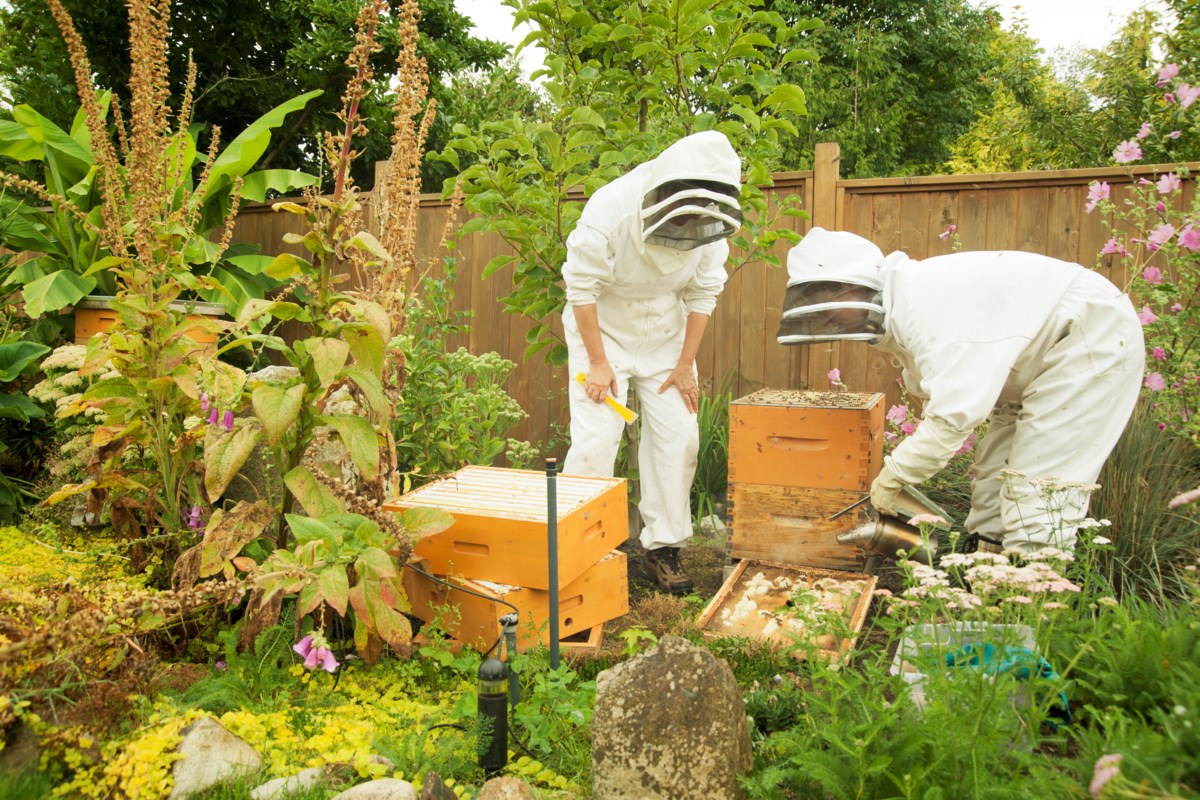WOODLAND, CA. — For a few frantic weeks, beekeepers from across the United States ferry billions of bees to California to rent them to almond growers who need the insects to pollinate the state’s most valuable crop.
But as the almond trees begin to bloom, blanketing entire valleys in white and pink blossoms, begin the beehive thefts that have become so prevalent that beekeepers are now turning to GPS tracking devices, surveillance cameras and other anti-theft technologies to protect their valuable colonies.
Hive thefts have been reported elsewhere in the country, most recently three hives containing around 60,000 bees taken from the garden of a central Pennsylvania grocery chain. They happen on a larger scale and only in California at this time of year because bees are in greatest demand during the world’s largest pollination event.
In recent weeks, 1,036 beehives worth hundreds of thousands of dollars have been stolen from orchards across the state, authorities said. The largest burglary involved 384 beehives that were taken from a field in Mendocino County, prompting the state beekeepers association to offer a $10,000 reward for information leading to their recovery.
“It’s hard to express what it feels like to take care of your hives all year long only to have them stolen,” Claire Tauzer wrote on Facebook to publicize the award. A day later, an anonymous informant led authorities to recover most of the boxes and a forklift stolen from Tauzer’s family business about 55 miles away on a rural property in Yolo County. A suspect has been arrested.
Investigators also found frames – the types used to hold the honeycomb together – belonging to Helio Medina, another beekeeper who lost 282 hives a year ago.
Medina said the theft devastated his apiary, so this year he placed GPS trackers inside the boxes. He also tied anti-theft cables around them and installed cameras nearby. As the almond blossoms approached and the beehives became more valuable, he drove on patrol through the orchards in the dark.
“We have to do what we can to protect ourselves. No one can help us,” Medina said.
The thefts usually occur at night when no one is in the orchard and the bees are back in their hives. The thief is usually a beekeeper or someone familiar with transporting bees.
“Most often they steal to make money and let the bees die,” said Rowdy Jay Freeman, a Butte County Sheriff’s Detective who has been monitoring hive thefts since 2013.
The tight supply of bees and skyrocketing costs for pollination — from less than $50 to rent a hive two decades ago to $230 per hive this year — are likely motivating beekeepers to go rogue.
Demand for bees has steadily increased over the past 20 years, as the popularity of this healthy, crunchy nut has made California the largest almond producer in the world. As a result, the area of land used to grow almonds has more than doubled to approximately 1.3 million acres.
Beekeepers have kept up with this growth by supplying an ever-increasing proportion of the country’s available hive stock. This year, a survey of commercial beekeepers estimated that it would take 90% of bee colonies in the United States to pollinate all almond orchards.
“That means beekeepers are coming from as far away as New York and Florida, and to get them here, pollinator costs have to go up,” said Brittney Goodrich, an agricultural economist at the University of California, Davis. .
But bee populations are notoriously unstable due to a host of issues, including disease, habitat loss and insecticides.
The drought that gripped the western states last summer also weakened the colonies. The lack of rain has ravaged the wildflowers that provide the nectar that bees turn into honey. Beekeepers had to artificially supplement their diets with sugar solutions and pollen substitutes — and incur more costs.
For beekeepers, the loss of a hive means the loss of income from honey production and future pollination, not to mention the costs of managing the hive throughout the year. They say they are barely breaking even.
“For every $210 paid to rent a hive, we spend almost as much there all year feeding the bees because of the drought. We do all the health checks, which is a lot of work, and we pay our workers full benefits,” Tauzer said.
Denise Qualls, a pollination broker who connects beekeepers with growers, suspects the thefts are happening because beekeepers can’t deliver the strong colonies they promised, “so they can get the money of the producer and then they leave the hives”.
“The producer is equally responsible when he accepts them,” she said.
To help customers track their investments, Qualls merged his company with tech startup Bee Hero to equip hive boxes with a GPS-enabled sensor.
Freeman, who got into beekeeping after investigating his first hive theft, said he advises beekeepers to use security cameras and put their names and phone numbers on the boxes.
He said some beekeepers had tried marking their boxes with SmartWater CSI, a forensic tool used to help police find recovered stolen goods. The clear liquid is only visible under UV light, even through layers of paint, so police can determine the rightful owner even when thieves attempt to disguise the boxes.
To increase the seriousness of the crime, Freeman worked with prosecutors in 2016 to charge a man accused of stealing 64 beehives with cattle rustling. Under California law, theft of property worth $950 or less is classified as a misdemeanor. But stealing any agricultural product worth at least $250 is considered a crime.
“Stealing one or 10 or 100 hives would result in the same charge,” he said.
The man pleaded guilty and was sentenced to 90 days in jail and three years probation.
The California State Beekeepers Association urges beekeepers to communicate regularly with growers about the location of their hives and encourages growers to hire reputable beekeepers who can prove ownership of their hives. The almond industry, meanwhile, is trying to reduce its reliance on bees by growing “self-fertile” almond varieties that require fewer bees for pollination and investing in research and other initiatives to improve their health.
The Almond Board of California has also joined a coalition of agricultural, environmental and government groups to create habitat for wild bees, butterflies and other pollinators on private working lands such as cattle ranches and orchards. The state government is funding $15 million for the effort, calling it an investment in “climate-smart agriculture.”
 Xoven Agricultor
Xoven Agricultor



